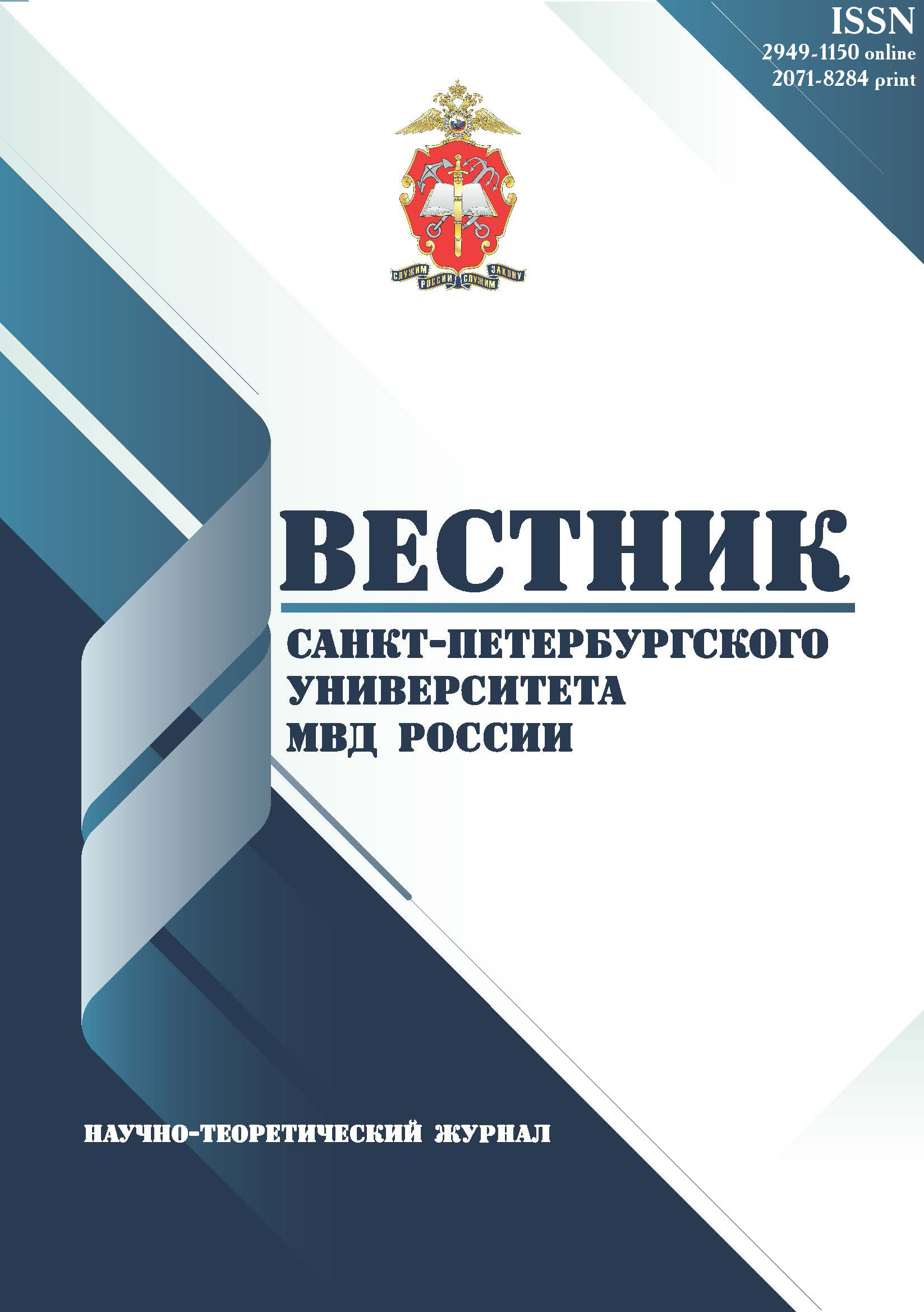from 01.01.2020 to 01.01.2021
Russian Federation
UDC 15
CSCSTI 15.31
The article presents the results of an empirical study aimed at analyzing hardiness of 14–17 year-olds with persistent illegal behavior (n = 118) in comparison with their peers who demonstrate conditionally normal behavior (n = 117). The assessment of hardiness was carried out with the use of the short version of the Hardiness Test by E. I. Rasskazova and E. N. Osin. The results show that adolescents with persistent illegal behavior are characterized by lower indicators of hardiness, in comparison with adolescents with conditionally normative behavior, and this trend is manifested both in the analysis of the total indicator and particular indicators of hardiness. The analysis of changes in the total and particular indicators of hardiness (performed with the cross-section method) identifies a trend associated with consistent increase in hardiness indicators among adolescents with persistent illegal behavior, while in adolescents form comparison group these indicators decrease. The analysis of gender differences allows us to establish that the trend to increasing hardiness in the group of adolescents with persistent illegal behavior is characteristic of girls, while the hardiness of boys who make up this group decreases as they grow up, as well as in their peers with conditionally normative behavior. The necessity of a differentiated approach to the psychological support of the personal development of boys and girls with persistent illegal behavior is discussed.
hardiness, adolescents, persistent illegal behavior, conditionally normative behavior, age dynamics, gender features
1. Hasanova R. R. Dinamika prestupnosti nesovershennoletnih v Rossii // Ekonomicheskoe razvitie Rossii. - 2019. - T. 26. - №. 11. - S. 68-73.
2. Teunaev A. S., Dubova M. E. Novyy vzglyad na kachestvenno-kolichestvennye pokazateli podrostkovoy prestupnosti v Rossii // Yuridicheskie issledovaniya. - 2021. - № 2. - C. 44-68. doi:https://doi.org/10.25136/2409-7136.2021.2.34667
3. Hodgkinson R., Beattie S., Roberts R., Hardy L. Psychological Resilience Interventions to Reduce Recidivism in Young People: A Systematic Review // Adolescent Research Review. - 2020. doi: 10.1007/ s40894-020-00138-x
4. Leont'ev D. A., Rasskazova E. I. Test zhiznestoykosti. - Moskva: Smysl, 2006. - 63 s.
5. Yaparova O. G. Osobennosti proyavleniya zhiznestoykosti u podrostkov s raznym urovnem agressivnosti // Psihologiya obrazovaniya v polikul'turnom prostranstve. - 2015. - № 4 (32). - S. 55-59.
6. Evseenkova E. V., Borisenka Yu. V. Vzaimosvyaz' riska autodestruktivnogo povedeniya starshih podrostkov s urovnem zhiznestoykosti // Vektor nauki Tol'yattinskogo gosudarstvennogo universiteta. Seriya «Pedagogika, psihologiya». - 2020. - № 3 (42). - S. 54-62. doi:https://doi.org/10.18323/2221-5662- 2020-3-54-62
7. Andronnikova O. O. On the relationship between uncertainty tolerance and hardiness in adolescents // Journal of Siberian Federal University. Humanities & Social Sciences. - 2021. - № 14 (3). - S. 320-326. doi:https://doi.org/10.17516/1997-1370-0723
8. Abdollahi A., Talib M. A., Yaacob S. N., Ismail Z. Emotional intelligence, hardiness, and smoking: Protective factors among adolescents // Journal of Child & Adolescent Substance Abuse. - 2016. - № 25 (1). - S. 11-17.
9. Odincova M. A. Stresspreodolevayuschee povedenie starsheklassnikov s raznym urovnem zhiznestoykosti // Izvestiya Saratovskogo universiteta. Novaya seriya «Filosofiya. Psihologiya. Pedagogika». - 2016. - T. 16. - Vyp. 2. - S. 191-198. doi:https://doi.org/10.18500/1819-7671-2016-16-2-191-198
10. Dolgova V. I., Rokitskaya J., Kapitanets E., Shayakhmetova V. Study of hardiness in adolescents and its interrelation with coping behavior // The European Proceedings of Social & Behavioural Sciences EpSBS. - 2019. - Pp. 298-305. doi:https://doi.org/10.15405/epsbs.2019.12.32
11. Rozhney D. A. Osobennosti samootnosheniya i zhiznestoykosti u starshih podrostkov s deviantnym povedeniem // Territoriya novyh vozmozhnostey. Vestnik Vladivostokskogo gosudarstvennogo universiteta ekonomiki i servisa. - 2018. - № 2 (41). - S. 159-166.
12. Kravcova T. M. Osobennosti stroeniya kartiny mira deviantnyh podrostkov (na primere detey-sirot i podrostkov s kriminal'nym povedeniem) // Sibirskiy psihologicheskiy zhurnal. - 2012. - № 46. - S. 96-107.
13. Prirezova D. A., Grogoleva O. Yu. Nesovershennoletnie osuzhdennye podrostki: osobennosti zhiznestoykosti, sklonnost' k suicidal'nomu risku i sfera interesov / Mezhvedomstvennyy podhod k soprovozhdeniyu lichnosti, okazavsheysya v trudnoy zhiznennoy situacii: teoriya i luchshie praktiki : materialy Mezhdunarodnoy nauchno-prakticheskoy konferencii, Irkutsk, 30 oktyabrya 2020 goda. - Irkutsk: Tipografiya «Irkut», 2020. - S. 234-241.
14. Raje D., Srivastava N. A study of emotional maturity and resilience among the juvenile delinquents and non-juvenile delinquents // Indian Journal of Health and Wellbeing. - 2014. - Vol. 5 (9). - Pr. 1078-1080.
15. Malkin V., Rogaleva L., Kim A., Khon N. The hardiness of adolescents in various social groups // Frontiers in psychology. - 2019. - Vol. 10. - Art. 2427. doi:https://doi.org/10.3389/fpsyg.2019.02427
16. Gor'kovaya I. A., Isachenko T. V., Shmygareva V. V. Vliyanie makrosocial'nyh usloviy na zhiznestoykost' podrostkov // Sovremennye problemy nauki i obrazovaniya. - 2015. - № 1-2. - URL: http://www.science-education.ru/ru/article/view?id=19963 (data obrascheniya: 07.06.2021).
17. Sinha J. R. Psychological hardiness among adolescents // International Journal of Indian Psychology. - 2018. - Vol. 6 (2). - Pr. 190-194. doi:https://doi.org/10.25215/0602.020
18. Odincova M. A. Stresspreodolevayuschee povedenie starsheklassnikov s raznym urovnem zhiznestoykosti // Izvestiya Saratovskogo universiteta. Novaya seriya «Filosofiya. Psihologiya. Pedagogika». - 2016. - T. 16. - Vyp. 2. - S. 191-198. doi:https://doi.org/10.18500/1819-7671-2016-16-2-191-198
19. Kuzmin M. Y., Konopak I. A. Distinctive features of adolescent hardiness in families of different composition // Psychology in Russia: State of the Art. - 2016. - Vol. 9(3). - Pp. 95-102. doi:https://doi.org/10.11621/pir.2016.0306
20. Zubova L. V., Aptikieva L. R. K voprosu gendernyh razlichiy v proyavlenii prestupnosti nesovershennoletnih (na primere Orenburgskoy oblasti) // Vestnik Orenburgskogo gosudarstvennogo universiteta. - 2018. - № 1 (213). - S. 25-31.
21. Kupchenko V. E. Vozrastnye osobennosti zhiznestoykosti u lic s razlichnymi tipami zhiznennoy strategii // Vestnik Omskogo universiteta. Seriya «Psihologiya». - 2014. - № 1. - S. 17-23.
22. Putilova O. V., Vindeker O. S., Lihoded A. A. Vozrastnye osobennosti samoaktualizacii i zhiznestoykosti u zhenschin // Izvestiya Ural'skogo federal'nogo universiteta. Seriya 1 «Problemy obrazovaniya, nauki i kul'tury». - 2018. - T. 24. - № 1 (171). - S. 104-113.
23. Osin E. N., Rasskazova E. I. Kratkaya versiya testa zhiznestoykosti: psihometricheskie harakteristiki i primenenie v organizacionnom kontekste // Vestnik Moskovskogo universiteta. Seriya № 14 «Psihologiya». - 2013. - № 2. - S. 147-165.
24. Gor'kovaya I. A., Miklyaeva A. V. Social'no-psihologicheskie faktory zhiznestoykosti podrostkov s ogranichennymi vozmozhnostyami zdorov'ya: teoriya i praktika. - Sankt-Peterburg: Izd-vo RGPU im. A. I. Gercena, 2019. - 186 s.
25. Bahvalova E. V. Gendernye osobennosti vzaimosvyazi kommunikativnyh harakteristik i adaptacii vospitannikov detskogo doma // Vektor nauki Tol'yattinskogo gosudarstvennogo universiteta. Seriya «Pedagogika, psihologiya». - 2018. - № 3 (34). - S. 51-57.














